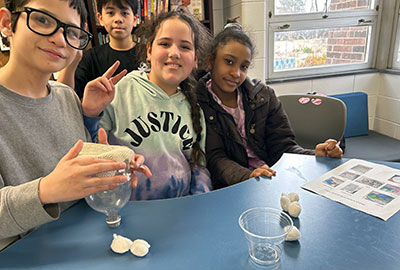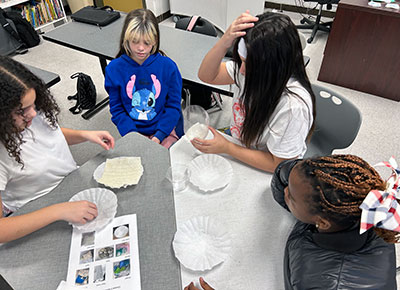 Filtration is a key part of making Louisville Pure Tap® clean, high-quality drinking water. Explaining how it works can be tricky to teach a group of sixth graders. Now imagine trying to understand the lesson when you’re still learning English.
Filtration is a key part of making Louisville Pure Tap® clean, high-quality drinking water. Explaining how it works can be tricky to teach a group of sixth graders. Now imagine trying to understand the lesson when you’re still learning English.
Louisville Water Community Relations Specialist Barbara Crow adjusted her approach for students at Newcomer Academy. In case you’re not familiar, Newcomer teaches students who recently moved to the United States. Their understanding and speaking skills in English are limited.
Crow leveled up the hands-on component of the filtration experiment and included lots of photos to help guide the class.
“I’m a talker and though most of our programs are very hands-on, I’m used to verbally explaining every step of the lesson. When the students don’t speak English that’s a pretty huge obstacle!” Crow said.
 The students were challenged to build a filter that provided fast, clean water. They picked three items from 10 materials, including cotton balls, sand, sponges, rocks, and netting.
The students were challenged to build a filter that provided fast, clean water. They picked three items from 10 materials, including cotton balls, sand, sponges, rocks, and netting.
“I created a handout with a picture of a finished filter and photos of every item. I also relied heavily on my river and Pure Tap® samples to show what the end product should look like,” Crow explained.
The class quickly realized some objects trapped the dirt but didn’t allow the water to flow through, or they only captured large particles of dirt and debris.
Crow’s group included students from eight countries: Afghanistan, Argentina, Cuba, Rwanda, Syria, Tanzania, Venezuela, and Vietnam. She received thank you notes from every student with lots of drawings, proof that they understood the concept.
Students stay at Newcomer for one to three months to get acclimated and learn some basic English skills. From there, they transfer to a school with an ESL (English as a second language) program.

